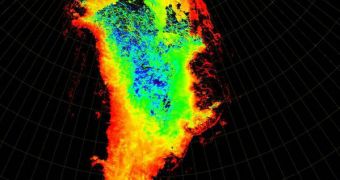A long-term project initiated by the European Space Agency (ESA) has finally demonstrated that it is possible to process satellite datasets in such a way that the properties of snow on the ground become apparent. Information obtained in this manner can then be included in climate models.
One of the reasons why this research was conducted in the first place is that experts still don't know very much about the role that snow plays in the interacting circuits that permeate our planet.
In past studies, snow has been determined to be an important part of the energy and water cycles on Earth, but the extent to which it affects them has thus far eluded analysis. Experts have also shown that its presence can influence temperatures all over the world.
Snow is responsible for reflecting massive amounts of sunlight back into space, acting like mirrors for incoming solar radiation. A significant loss of snow from Greenland, the Arctic or Antarctica could therefore easily lead to a rise in global temperatures.
Over the past three decade, constant measurements have revealed that snow covers are melting around the world, with very few exceptions. The phenomenon has tremendous implications for our future, and yet few of them have been teased out by researchers.
The extent of ice and snow is being regularly measured by orbital radar and optical instruments, but what scientists are really interested in is data such as snow grain size and snow cap temperature.
The ESA investigation managed to produce a new set of algorithms that, once applied to archive data, revealed the exact information experts were interested in. The Snow Radiance project was carried out by Brockmann Consult.
This investigation was carried out through the Earth Observation Support to Science Element (STSE) at the agency. Experts who created the algorithms used data collected over Greenland in 2004.
“The STSE program is an excellent initiative to give scientists the opportunity to test fresh and new ideas. For the Snow Radiance project, the new algorithms could be partly integrated into ESA's data processing facility,” says Olaf Krüger.
“This demonstrates the usefulness of the project and direct transition from a scientific idea to an operational product,” concludes the Brockmann Consult expert.

 14 DAY TRIAL //
14 DAY TRIAL //